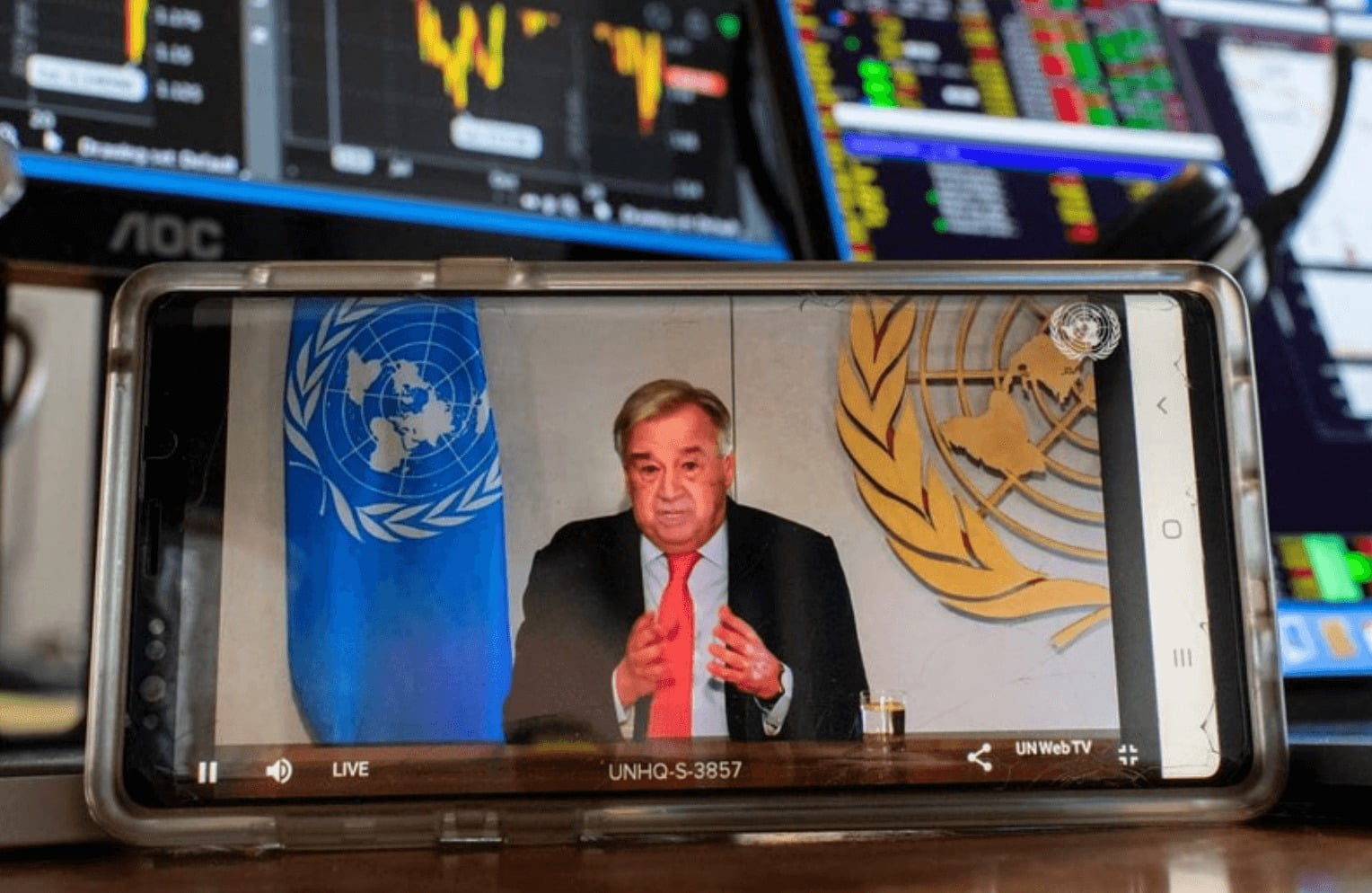Late last week, the United Nations published a global “roadmap” to defeat COVID-19, including a new $1 billion trust fund for low- and middle-income countries, where the impacts are expected to be far worse once the virus gains momentum in those regions.
“Let us remember that we are only as strong as the weakest health system in our interconnected world,” the Secretary-General of the UN Antonio Guterres said at the launch of the new report Tuesday.
The report describes itself as a call to action for a global, coordinated multinational response that amounts to at least 10 percent of global gross domestic product (GDP) – more than $8 trillion – because “no country will be able to exit this crisis alone.” Citing the $2 trillion stimulus package the US Congress passed, that is roughly equal to 10 percent of the national GDP, Guterres said the world needed to do the same.
But the Secretary-General said that countries still haven’t come together for a coordinated, articulated response to the pandemic, which he described as the most challenging crisis the world has faced since World War II and in the 75-year history of the United Nations. Not only does it threaten the lives of everyone in the world, he said, but it will “bring a recession that probably has no parallel in the recent past.”
There are more than 1 million cases have been confirmed globally, according to Johns Hopkins University, with the U.S. reporting the highest daily death toll so far of nearly 1,200 and the total global death toll approaching 57,000.
Major outbreaks have not yet been reported in low- and middle-income countries – likely due to a lack of testing or the virus’ long incubation period – but health experts are bracing for the impact to be devastating. Given that many of these countries have inadequate health systems, lack clean running water, have high population densities and have large informal economies, the fatality rate could be much higher than what we’re seeing in developed countries.
The Secretary-General noted that although countries have mobilized $5 trillion so far to respond to the pandemic, it’s far from what’s needed, particularly because most of that money has been mobilized by developed countries to support their own economies. “We are far from having a global package to help the developing world create the conditions [they need] both to suppress the disease and to address the dramatic consequences in their populations,” he said.
The UN International Labour Organization (ILO) projects that due to the pandemic, five to 25 million jobs will be lost in 2020, and the world will lose $860 billion to $3.4 trillion in labor income, with small and medium enterprises, self-employed workers and daily wage earners being hit the hardest, particularly in less developed countries.
Additionally, the United Nations Educational, Scientific and Cultural Organization (UNESCO) says that school closures have already forced 87 percent of the global student population (or more than 1.5 billion students) out of schools, and more than 320 million primary schoolchildren in 120 countries are missing out on school meals, according to the World Food Programme’s estimates. If the interruption to education is sustained, particularly in poorer and conflict-ridden countries, we could see a rise in child labor and child marriage, which would have long-term effects on those countries’ development, the report warns. Guterres last week also repeatedly called for a global ceasefire and said that the UN is working hard to bring warring parties together for talks.
Guterres also warned that if low- and middle-income countries aren’t given adequate support, we might “face the nightmare of the disease spreading like wildfire in the global South with millions of deaths and the prospect of the disease re-emerging [in global North] where it was previously suppressed.”
To contribute to this global roadmap, the UN has launched a new multi-partner COVID-19 Response and Recovery Fund for low- and middle-income countries. In the first nine months, the projected financial requirements of the fund are $1 billion, but the size will be reviewed as needs evolve. The fund will help low- and middle-income countries respond to the emergency and recover from the socio-economic shock according to the global “roadmap” the UN published Tuesday for all countries.
The “shared responsibility and global solidarity roadmap” consists of three steps. First, we must immediately launch the “most robust and cooperative health response the world has ever seen” to suppress the transmission of the virus to control the pandemic. This includes scientific collaboration to develop a vaccine and effective treatments.
Second, countries must cushion the effects of the pandemic on people’s lives and livelihoods through supports such as the direct provision of resources, health and unemployment insurance, scaling-up social protection and supporting businesses to prevent bankruptcies and job loss.
Third, we should build back better, with stronger health systems, less poverty and inequality and a cleaner, healthier planet, to avoid facing a similar crisis again in the future.
“When we get past this crisis, which we will, we will face a choice”, said Guterres, “we can go back to the world as it was before or deal decisively with those issues that make us all unnecessarily vulnerable to crises”.
The pandemic is a “defining moment for modern society,” he added. “History will judge the efficacy of the response not by the actions of any single set of government actors taken in isolation, but by the degree to which the response is coordinated globally across all sectors for the benefit of our human family.”
